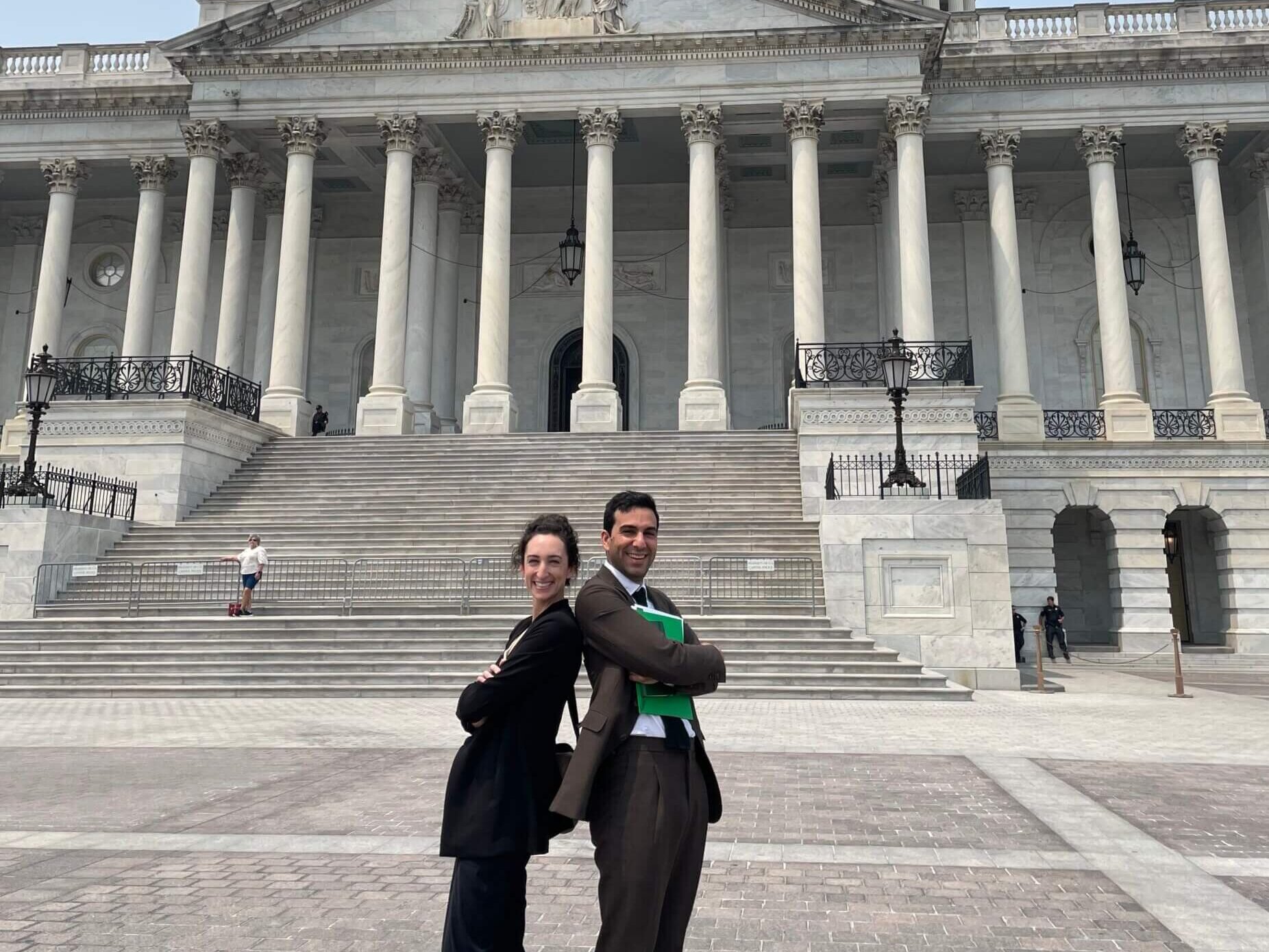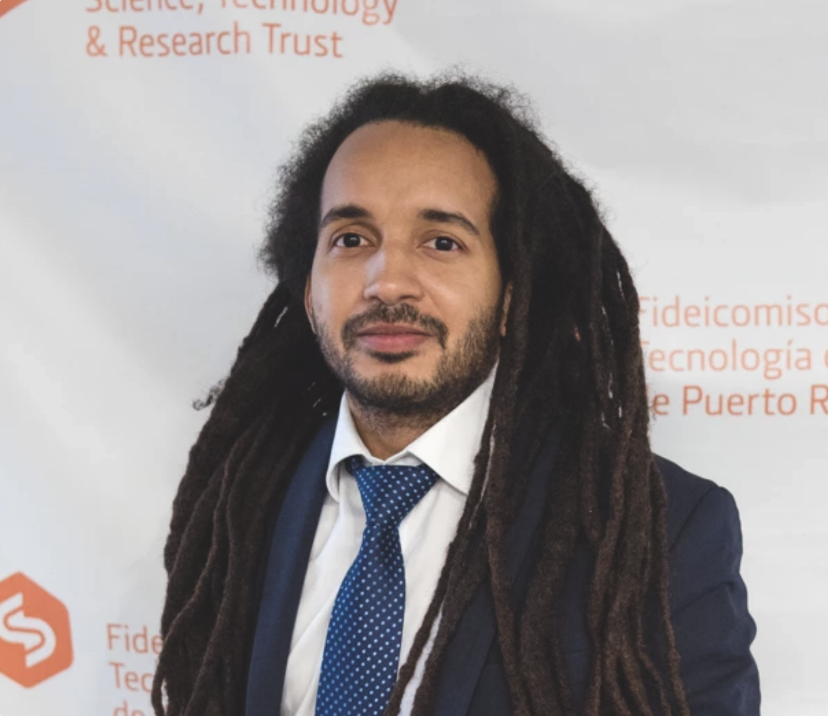What’s the point of learning new skills without putting them into action?
In early June, COMPASS led a policy engagement training in Washington, DC through a partnership with the ClimateWorks Foundation for scientists and experts in ocean carbon dioxide removal (henceforth referred to as ocean CDR). Over the course of the daylong training, ocean CDR specialists had the opportunity to workshop the takeaways of their research with policymakers—including executive branch, agency, and state-level policy experts—through feedback sessions and practice scenarios.
Several of the ocean CDR specialists from the policymaker training also had the opportunity to share their message in no other setting than the heart of Washington, DC. After a day of practice and feedback with peers and experts, Sarah Mastroni, program officer at Ocean Visions, and Adam Subhas, associate scientist at the Woods Hole Oceanographic Institution, turned around and put their practice into action on Capitol Hill.
Through a series of meetings with congressional and agency staff, Sarah and Adam both had the opportunity to further refine their messages about the potential uses of ocean CDR techniques to adapt to and mitigate the effects of climate change—in real time. Of course, transitioning from a training directly to a meeting in the House of Representatives office building is jumping right into the fire, but there’s no better way to learn.
A few weeks later, after suits had been dry-cleaned and everyone’s feet had recovered after a day of walking up and down Capitol Hill in dress shoes, COMPASS caught up with Sarah and Adam to reflect on their experience.
What were you most looking forward to about the COMPASS training?
Mastroni: Often, in my experience, we [scientific experts] are taught a skillset, but not put in a situation to practice communicating with that audience in a learning environment, so I think that was a unique aspect of the training that I was looking forward to. The specificity was great too—there’s real value in getting specific feedback. The fact that COMPASS offered this training for such a cutting-edge field was incredibly helpful.
Subhas: I was looking forward to gaining some hands-on experience with science communication and a completely new audience, specifically for policymaking. I was looking forward to getting some professional guidance before the actual day [of Hill meetings]. In terms of the Hill itself, I didn’t really know what to expect and was viewing it as a way to practice.
What takeaways from the training did you find particularly helpful in regards to engaging with policymakers on Capitol Hill?
Mastroni: I felt very prepared to introduce myself and cut to the chase—I was prepared for what to expect going in. I felt prepared for the follow-up questions too. The key is to lead with a succinct, high level introduction, and be prepared to dive into every aspect of what you said. Really research each policymaker or staffer—it’s important to look into their work to tweak your message box. I also emphasized different things in different meetings, and even though it feels intuitive, I wouldn’t have thought of that.
Subhas: I found the elevator pitch really useful. It was probably the most uncomfortable part, but the way that I started to phrase things helped my lead-in and introduction in Hill meetings. I also thought the scenario/role-playing was great to put us in a place to hone the message.
What would you like others to know about engaging with policymakers?
Mastroni: I would say that this was a really approachable way to practice communicating this stuff. I went into this pretty anxious—as someone who spends zero time on the Hill, it feels really foreign, but these conversations were really approachable because I felt so prepared. It’s a succinct conversation with one or maybe two people who aren’t experts in ocean CDR. You’re the expert informing them, and success feels like opening a door or starting a conversation. I didn’t go into it looking for a commitment or agreement. In that way, too, it felt not low-stakes, but doable.
Subhas: I hadn’t thought much about Hill engagement, but where this field [oCDR] is developing, it’s been increasingly on my radar but I didn’t know how to engage with it or what to do. Having this experience and being forced to think about it and do it was really helpful, and gave me a really good window into the role that scientists can play with policymakers. It was a one-time meeting and who knows what will happen, but I found it eye opening and interesting. I’m excited to see where the whole thing goes. It was much more fun than I expected.
What’s next for you in policy engagement?
Mastroni: I’d like to keep practicing this kind of engagement. Coming off of Capitol Hill Oceans Week and talking to Ocean Visions staff, everyone at OV is interested in continuing these conversations. We’ve had conversations about advancing our policy engagement. I’m looking forward to continuing these conversations at Ocean Visions. I was pleasantly surprised and enjoyed it more than I thought I would, and I’d like to keep stepping into this policy world.
Subhas: I’ve been asked by the [WHOI] administration to go to COP—it’s another level but I’m sure the skills I’ve learned will be helpful there too.
A huge thank you to Sarah and Adam for taking the time to reflect on their experience!



